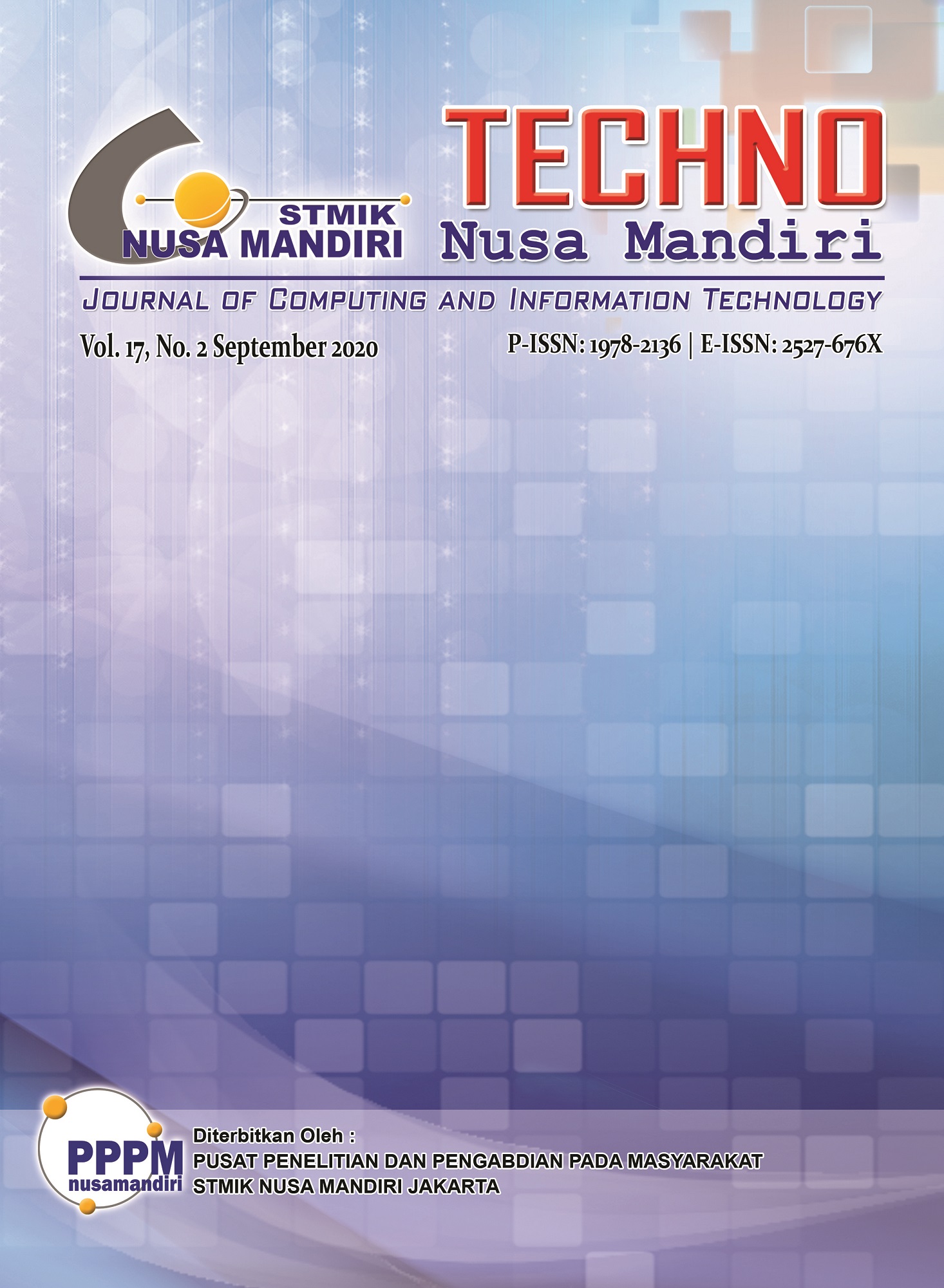DESIGNING A ROUTER REDUCTION SYSTEM USING HOT STANDBY ROUTER PROTOCOL METHOD FOR BACKUP LINK IN DITJEN PPKL
DOI:
https://doi.org/10.33480/techno.v17i2.1643Keywords:
Router Redundancy, HSRP, BackupAbstract
Computer networks play an important role in data communication at companies or government institutions to support them in terms of work. In this case, the authors conducted observational research and direct interviews with IT staff at the Ditjen PPKL Control about how the network operates in that place. Routers have a very important role in data communication and connecting different networks, so a router reduction system is needed as a solution to minimize failures on the network or these devices. The network topology in each office or government agency is different, which makes the problems in each government office or agency different. Based on the research that has been done, the network of the Ditjen PPKL often experiences a link down which causes disconnection of the internet connection and hinders the productivity of staff. So a router redundancy system is needed to maintain network availability, such as the Hot Standby Router Protocol (HSRP) which has two lines, one as the mainline and the other as a backup if the mainline is down. That way network availability will always be maintained without having to wait for the IT staff to do troubleshooting if there is a network failure. The result of this research is to provide maintained network availability. Even if a link goes down, the network will automatically return to normal.
References
Akmaludin, A., Mt, A., Masruroh, S. U., & Sc, M. (2019). Evalusi Kinerja Hot Standby Router Protocol ( HSRP ) dan Gateway Load Balancing Protocol ( GLBP ) Untuk Layanan Video Streaming. CyberSecurity Dan Forensik Digital, 2(1), 43–51.
Anwar, U., Teng, J., Umair, H. A., & Sikander, A. (2019). Performance analysis and functionality comparison of FHRP protocols. 2019 IEEE 11th International Conference on Communication Software and Networks, ICCSN 2019, 111–115. https://doi.org/10.1109/ICCSN.2019.8905333
Baskoro, A. N., Anton, A., & Astuti, P. (2020). Independent Research Final Report: Designing a Router Reduction System Using Hot Standby Router Protocol Method for Backup Link In Ditjen PPKL.
Fadhilah, M. I., Supendar, H., & Sw, S. (2020). PERANCANGAN BACKUP ROUTER DENGAN METODE HSRP ( HOT STANDBY ROUTER PROTOCOL ). 23(1), 1–10.
Firmansyah, Wahyudi, M & Rachmat, P. (2018). Analisis Perbandingan Kinerja Jaringan CISCO Virtual Router Redundancy Protocol (VRRP) Dan CISCO Hot Standby Router Protocol (HSRP). Teknik Komputer AMIK BSI Tegal, 1(1), 764–769.
Geraldi, T. E., Wahyuddin, M. I., & Aningsih, A. (2020). Perancangan Backup Link Menggunakan Metode HSRP (Hot Standby Router Protocol) Dalam Penyediaan Layer-3 Redundansi. Jurnal Media Informatika Budidarma, 4(1), 201–207. https://doi.org/10.30865/mib.v4i1.1873
Haryoyudhanto, H. D., Fitri, I., & Aningsih, A. (2020). Implementasi Encapsulation Jaringan Redudansi VLAN Menggunakan Metode Hot Standby Router Protocol (HSRP). JOINTECS (Journal of Information Technology and Computer Science), 5(1), 49. https://doi.org/10.31328/jointecs.v5i1.1247
Kumar, B. I. D., & Vasanth, G. (2017). Performance Evaluation of HSRP based reliable Multihomed Network for two Different Applications. International Journal of Innovations & Advancement in Computer Science IJIACS, 6(8), 92–99.
Pracasitaram, I. G. M. S. B., Sastra, N. P., & Wirastuti, N. D. (2019). Performansi Jaringan TCP/IP Menggunakan Metode VRRP, HSRP, dan GLBP. Majalah Ilmiah Teknologi Elektro, 18(1), 77. https://doi.org/10.24843/mite.2019.v18i01.p11
Pratama, E. K. (2019). Implementasi Hot Standby Router Protocol Cisco Pada Jaringan Thin Client. Jurnal Akrab Juara, 4(4), 160–168. https://doi.org/10.1017/CBO9781107415324.004
Purwanto, W., & Risnanto, S. (2018). Implementasi metode hsrp pada bank jawa barat dan banten kantor wilayah i dan kcp simpang dago. Jurnal Infotronik, 3(1), 35–45.
Rahman, Z. U., Mukhtar, S., Khan, S., Khan, R., Ullah, Z., Rashid, R., & Ahmad, W. (2017). Performance Evaluation of First HOP Redundancy Protocols ( HSRP, VRRP & GLBP ). J . Appl. Environ. Biol. Sci, 7(3), 268–278.
Sulaiman, O. K., Ihwani, M., & Basri, M. (2015). Model Hierarki Network dengan Menggunakan Spanning Tree Protocol (STP) dan Hot Standby Router Protocol (HSRP). Seminar Sehari Program Pascasarjana Informatika (SENOPATI), 1(1), 42–46.
Suprijatmono, D., & Siswadi, A. (2019). Implementasi First Hop Redundancy Protocol ( FHRP ) Pada Jaringan Data Untuk Meningkatkan Availibility Pada Pelanggan. Sainstech, 29(2), 50–59.
Udhayamoorthi, M., Mohan, K. S., Karthik, D. S., Dinesh, P. S., & Senthilkumar, C. (2015). Enhanced Designing Of Network Using Ipv6 Protocol And Enabling Hsrp For Redundancy. International Conference on Soft-Computing and Network Security.
Downloads
Published
How to Cite
Issue
Section
License
The copyright of any article in the TECHNO Nusa Mandiri Journal is fully held by the author under the Creative Commons CC BY-NC license. The copyright in each article belongs to the author. Authors retain all their rights to published works, not limited to the rights set out on this page. The author acknowledges that Techno Nusa Mandiri: Journal of Computing and Information Technology (TECHNO Nusa Mandiri) is the first to publish with a Creative Commons Attribution 4.0 International license (CC BY-NC). Authors can enter articles separately, manage non-exclusive distribution, from manuscripts that have been published in this journal into another version (for example: sent to author affiliation respository, publication into books, etc.), by acknowledging that the manuscript was published for the first time in Techno Nusa Mandiri: Journal of Computing and Information Technology (TECHNO Nusa Mandiri); The author guarantees that the original article, written by the stated author, has never been published before, does not contain any statements that violate the law, does not violate the rights of others, is subject to the copyright which is exclusively held by the author. If an article was prepared jointly by more than one author, each author submitting the manuscript warrants that he has been authorized by all co-authors to agree to copyright and license notices (agreements) on their behalf, and agrees to notify the co-authors of the terms of this policy. Techno Nusa Mandiri: Journal of Computing and Information Technology (TECHNO Nusa Mandiri) will not be held responsible for anything that may have occurred due to the author's internal disputes.
















